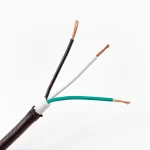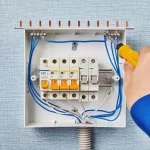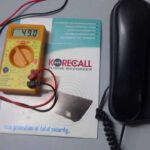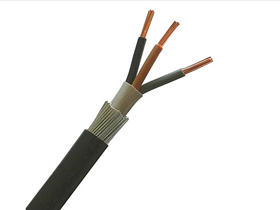Telephone cables typically carry 48 volts DC during normal operation. This voltage is supplied by the telephone company's central office through the phone line to power your telephone equipment. However, the voltage can vary significantly depending on the line status - it ranges from 6-12 volts when the phone is off-hook (in use) and can spike up to 90-100 volts AC during ringing.

telephone cable voltage
Standard Telephone Line Voltages
Normal Operating Conditions
- On-hook (idle): 48V DC
- Off-hook (in use): 6-12V DC
- Ringing: 90-100V AC (20 Hz frequency)
Why 48 Volts?
The 48-volt standard was established because it provides sufficient power to operate telephone equipment over long distances while remaining below the 50-volt threshold that requires special safety precautions in most electrical codes.
Voltage Variations by Phone Line Type
Traditional POTS (Plain Old Telephone Service)
- Standard residential and business lines
- 48V DC supplied from central office
- Power travels over the same copper wires that carry voice signals
Digital Phone Lines
- ISDN: Similar 48V DC power requirements
- T1/PRI: May use separate power sources
- VoIP: Powered locally or via PoE (Power over Ethernet)
Modern Alternatives
- VoIP phones: Typically 48V DC via PoE or local power adapter
- Cellular/Wireless: Battery powered, no line voltage
- Fiber optic: May require separate power source
Safety Considerations
Is Telephone Voltage Dangerous?
While 48V DC is generally considered low voltage, certain conditions can pose risks:
- Ringing voltage (90-100V AC) can cause a noticeable shock
- Wet conditions increase conductivity and shock risk
- Lightning strikes can introduce dangerous high voltages
- Crossed wires with power lines create serious hazards
Safety Precautions
- Disconnect phone lines before electrical work
- Use insulated tools when working on phone systems
- Never work on phone lines during thunderstorms
- Be aware that ringing can occur unexpectedly
Testing Telephone Line Voltage
Equipment Needed
- Digital multimeter
- Insulated test probes
- Basic safety equipment
Testing Procedure
- Measure on-hook voltage: Should read approximately 48V DC
- Check polarity: Tip (green) is negative, Ring (red) is positive
- Test during ringing: Voltage will spike to 90-100V AC
- Verify off-hook voltage: Should drop to 6-12V DC when phone is answered
Troubleshooting Common Voltage Issues
Low Voltage Problems
- Causes: Long cable runs, poor connections, central office issues
- Symptoms: Weak dial tone, poor call quality, phones won't ring
- Solutions: Check connections, contact phone company
No Voltage
- Causes: Disconnected service, damaged cables, central office problems
- Symptoms: No dial tone, completely dead line
- Solutions: Verify service status, check physical connections
Intermittent Voltage
- Causes: Loose connections, damaged insulation, moisture ingress
- Symptoms: Crackling sounds, intermittent dial tone
- Solutions: Secure connections, replace damaged cable sections
Historical Context
The 48-volt telephone standard has remained consistent for over a century, providing backwards compatibility with older equipment while meeting modern power requirements. This voltage level was chosen as the optimal balance between:
- Sufficient power for long-distance transmission
- Safety considerations for installers and users
- Compatibility with available switching equipment
- Cost-effectiveness of power supply systems
Modern Developments
Power over Ethernet (PoE)
Many modern business phone systems use PoE, which also delivers 48V DC but through data cables rather than traditional phone lines.
Fiber Optic Systems
Newer fiber-based phone systems may not carry electrical power on the communication lines, instead relying on local power sources or separate power feeds.
Conclusion
Understanding telephone cable voltage is essential for anyone working with phone systems, whether for installation, maintenance, or troubleshooting. The standard 48V DC provides reliable power for traditional phone equipment, but always exercise caution due to higher ringing voltages and potential safety hazards. When in doubt, consult with qualified telecommunications professionals or your phone service provider.
















